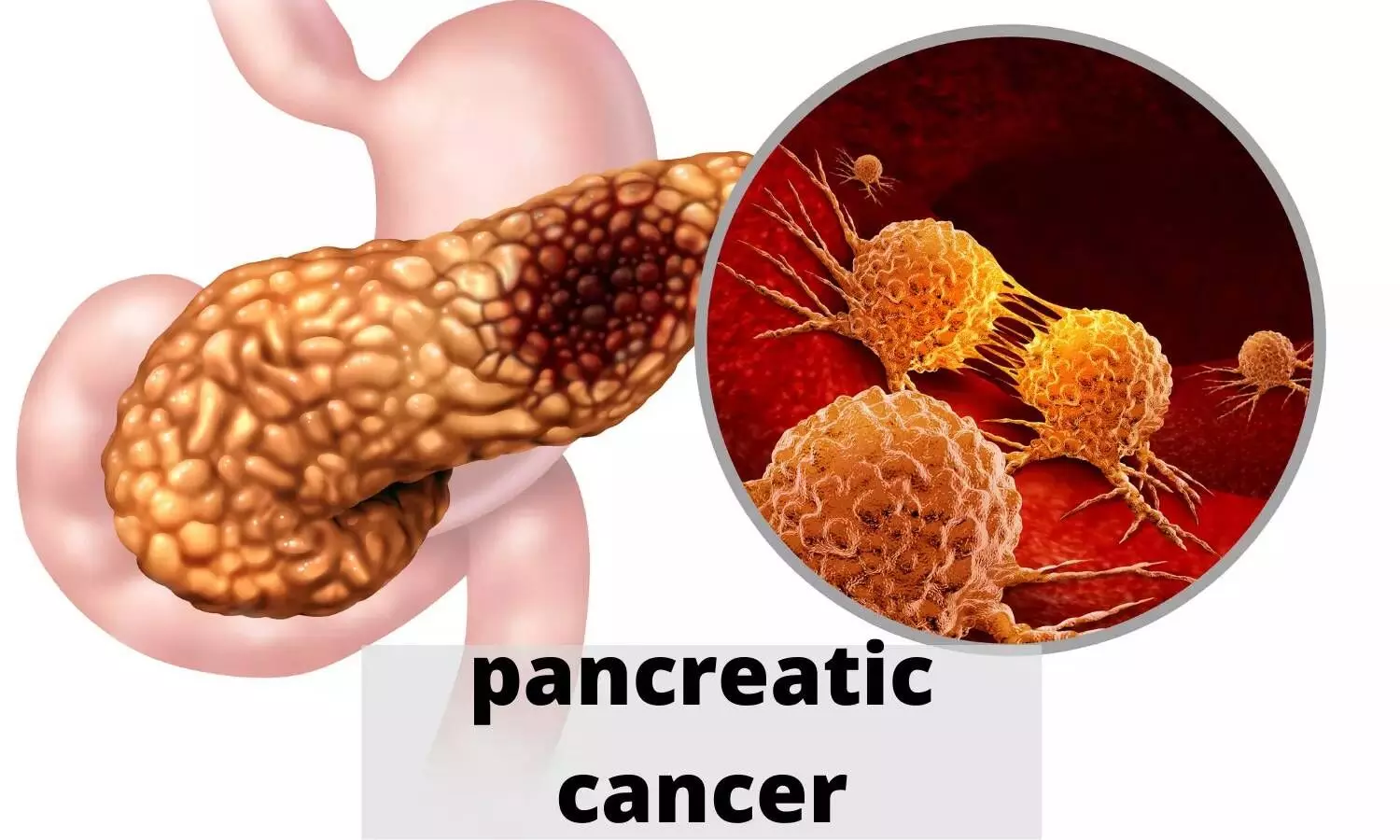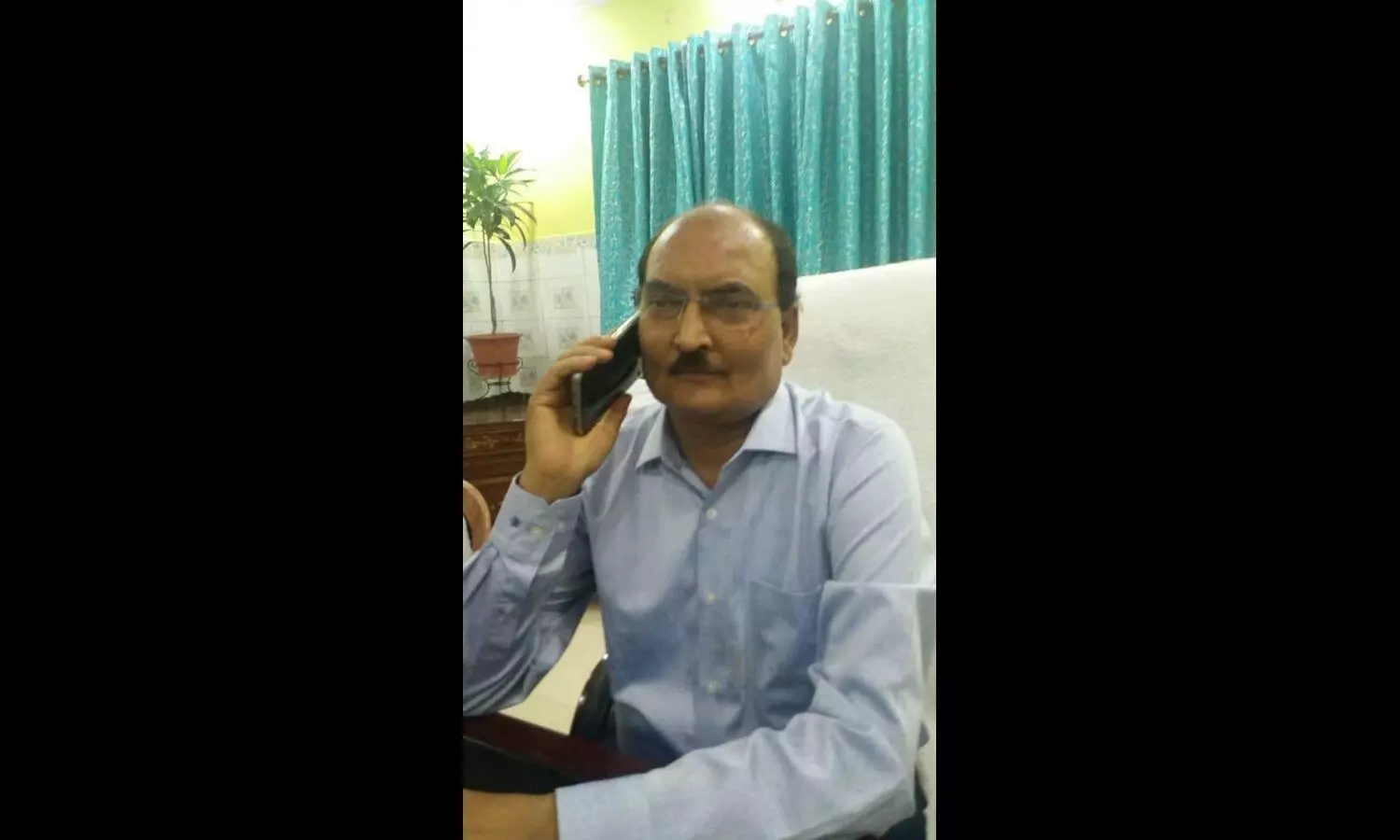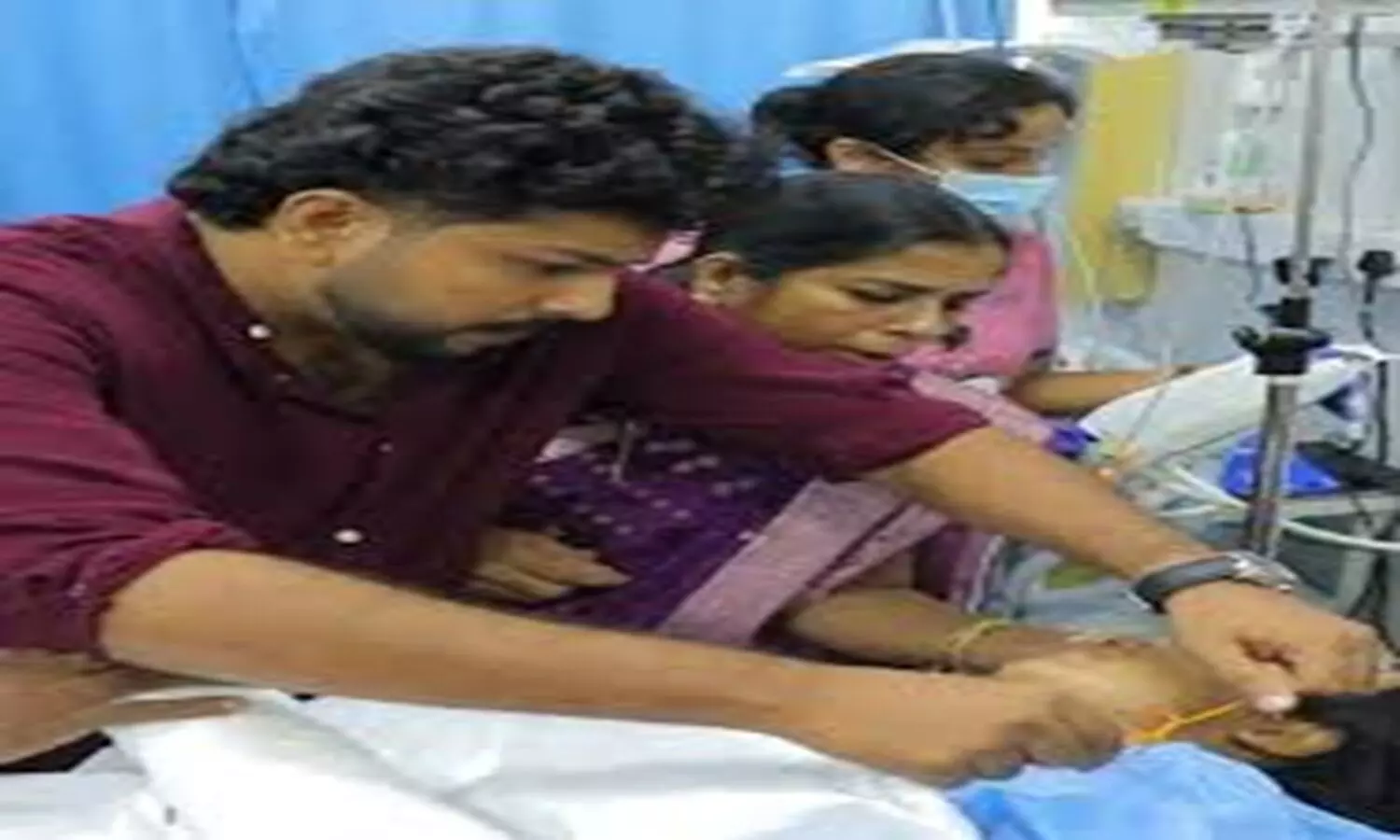New Delhi: The National Consumer Disputes Redressal Commission (NCDRC) recently directed a doctor from West Bengal to pay Rs 2.5 lakh to a patient, whose skin condition did not improve despite undergoing treatment.
Even though the Apex Consumer Court found the allegations of medical negligence in the diagnosis of the disease and administration of steroids as false, it noted that the patient's condition did not improve, and she had to suffer a lot for not having received the benefits of the treatment administered by the treating doctor.
Accordingly, setting aside the State Commission's earlier order of directing the doctor to pay Rs 10 lakh, the Apex Consumer Court reduced the amount and directed the same to be paid to the patient for the deficit in the administration of corrective medicines.
The complainant had alleged deficiency in service and medical negligence against the treating doctor for having failed to take due care in diagnosing the skin disease and having administered medicines based on an experimental treatment that severely and adversely affected the metabolism of the patient as a whole, from which she suffered tremendously and also suffered substantial physical damage.
It was alleged that the treating doctor had administered steroids that resulted in complications, and apart from that, immunosuppressant drugs were also prescribed in disproportionate overdoses, which further aggravated the same and caused incalculable harm to the physique of the complainant.
The treating doctor refused to receive the notice, which was returned with the postal remark of refusal. Consequently, the complaint proceeded ex-parte to the appellant and was ultimately allowed by the State Commission by imposing damages to the tune of Rs 5 lakhs on the appellant and Rs 10,000 as litigation cost.
When the complainant filed an Execution, the treating doctor filed an appeal before the NCDRC, arguing that he had no knowledge of the proceedings prior to the steps taken in the Execution proceedings.
NCDRC in its order dated 09.06.2022, stayed the State Commission's order with a direction to the doctor to pay Rs 20,000 to the complainant and depositing 50% of the decretal amount before the State Commission
The counsel for the treating doctor argued that the drugs which were prescribed were in accordance with the medical protocol and after taking due care. It was also urged that there was no expert evidence led by the complainant to demonstrate that there was any deficiency or negligence either in diagnosing or treating the disease as prescribed by the treating doctor. The counsel argued that in the absence of any such expert evidence, the inferences drawn by the State Commission are based on some sort of personal knowledge without there being any scientific basis for the same.
After perusing the facts as brought on record, the NCDRC bench observed that when the complainant went and got herself examined by the treating doctor, the handwritten prescription records a doubt with a question mark of the disease Tinea Corporis also commonly known as “ring worm” which is a superficial fungal infection usually occurring on the arms and legs. It is also described as dermatophytosis. The counsel for the appellant submitted that this was diagnosed and suspected on the very first day by the appellant.
The doctor also prescribed tests including IgE. The prescription also advised Eukart as one of the medicines. The patient was advised to take the medicine and then to come back again. The report revealed that the IgE level was very high, and in this background, the treatment was advised.
At this outset, the Apex Consumer Court observed that this test was dated 10.01.2019, and the second visit made by the patient after the other blood tests etc. were carried out was on 26.01.2019. After having noticed the high level of IgE, the appellant for the first time prescribed injection Tenacort40. This is the only steroid injection which was prescribed by the treating doctor, and that too on 26.01.2019. The medicine Eukart was repeated with advice to visit the doctor again.
Thereafter, the patient arrived on 02.03.2019 and complained of eruptions all over the skin. Blood samples were advised of IgE level once again and other blood tests, including lipid profile, urea creatinine. Tenacort40 was again advised to be administered biweekly in the said prescription. The other laboratory reports of the blood tests including the IgE levels were once again reported and the report dated 29.03.2019 indicated IgE level as 1105, which was higher than the previous report.
The counsel for the appellant that despite steroid having been administered, the level continued to rise and did not indicate any reduction. The third time, the complainant visited the doctor on 30.03.2019 when she was referred to the Dermatologist. The counsel argued that the said prescription nowhere indicated any advice for administration of steroids, but Folitrex 2.5 mg tablet, and immunosuppressant, was prescribed one tablet three times in a week.
It was submitted by the counsel that Folitrex is the generic medicine named Methotrexate, which is an immunosuppressant and also a chemo drug. The counsel submitted that the said medicine is administered for a large number of diseases, including Arthritis, cancer and other such diseases where immunosuppressants are required, including dermatitis that was also diagnosed in the prescription dated 30.03.2019.
The top consumer court noted that the counsel for the complainant was that this continued administration of steroid and the immunosuppressant drugs led to the complication that was aggravated due to the administration of another medicine, Furosemide. It also took note of the fact that immediately after the prescription dated 30.03.2019, the complainant shifted for treatment to the Narayana Hospital, where she was admitted on 03.04.2019 and was discharged on the same date.
"We have considered the submissions raised and have perused the complaint, the allegations made and the evidence adduced. The findings recorded by the State Commission are undoubtedly based on the complaint allegations as the appellant did not contest the matter before the State Commission where it went ex-parte," NCDRC noted.
However, the Apex Consumer Court perused the allegations about the administration of Furosemide medicine. It observed,
"On record are the prescriptions as well as the discharge summary and certificates of the Narayana Hospital where the respondent no. 1 had been later on treated. Neither the prescriptions of the appellant indicate any advice to administer Furosemide nor is there any recital of the said medicine or its equivalent in any of the prescriptions issued by the appellant. The recital contained in the discharge summary of the Narayana Hospital that the patient was on oral Furosemide for three months is nowhere substantiated by the prescriptions that were produced by the complainant herself. The recital therefore in the discharge summary also appears to be without any basis. Thus, paragraph 9 of the complaint referring to the said medicine being administered for months together is without any basis and it is because of this that the State Commission has not accepted the said allegation or even commented upon it. The said allegation therefore in the complaint seems to be false."
"We have then examined the allegation about the administration of Tab. Folitrex (Methotrexate) medicine which we find was prescribed for the first time in the appellant’s prescription dated 30.03.2019. This medicine had not been prescribed earlier. Thus, there was no occasion for the administration of Methotrexate medicine being taken by the complainant for three months," it also noted.
NCDRC observed that shortly after this, the patient was shifted to Narayana Hospital. Therefore, it held that
"There is nothing to substantiate that Methotrexate was taken by the complainant for three months. Even otherwise if it was prescribed for the first time only on 30.03.2019, there was nothing to infer that she had been taking this medicine for the past three months. The Narayana Hospital discharge summary therefore once again recorded a wrong fact of taking Methotrexate for three months. As a matter of fact, the complainant does not seem to have taken the medicine at all, in as much as, immediately upon its prescriptions on 30.03.2019, she chose to switch over to Narayana Hospital on 03.04.2019 which is just three days after the prescription dated 30.03.2019. There was nothing to demonstrate that the medicine had been taken for three months or for that matter even for three days. Accordingly, we find that the discharge summary and certificate of the Narayana Hospital mentions a replication of the allegations in the complaint without even looking into the prescriptions of the appellant."
The Apex Consumer Court also noted that the Narayana Hospital discharge summary records its diagnosis as “Tinea Corporis”. Referring to this, the Commission noted,
"This diagnosis clearly matches with the same suspect diagnosis recorded by the appellant on the first occasion in his prescription dated 05.01.2019. It is therefore clear that there is no error in the diagnosis made by the appellant regarding the nature of the disease."
Addressing the allegations regarding the administration of steriods, the Commission noted that the Narayana Hospital indicated that the rashes followed a systematic steroids intake. This diagnosis was made on the same date when the patient was admitted and discharged.
"As noted above, the administration of Furosemide and Methotrexate for three months has been found to be false and based on no evidence. The discharge summary of the Narayana Hospital records these recitals which remain unsubstantiated. There is therefore every reason to assume that the discharge summary was prepared by the Narayana Hospital without looking into the documents," it held.
"Coming to the administration of steroids, we find that the Tenacort40 injection was first prescribed on 26.01.2019. It was almost after more than a month that it was again prescribed on 02.03.2019. In spite of the said administration, the IgE level of the complainant did not reduce and from 1104 on 10.01.2019, it rose to 1105 on 29.03.2019. It is therefore obvious that the administration of Tenacort40 which was a steroid did not have any impact indicating any control over the infection. No further prescription demonstrates any infusion or injection of a steroid to the complainant. In such circumstances, the conclusion drawn in the diagnoses of Narayana Hospital that the rashes followed the steroid intake in a systematic way is not exactly established. To the contrary, Tinea Corporis already existed when the complainant was examined by the appellant on 05.01.2019," it oberved.
Noting that the complainant contended attributed negligence to the treating doctor for administering sterioids, which affected her health and the rash spread over the whole body, the Commission clarified that neither Furosemide nor Folitrex was taken for three months as alleged. Folitrex was an immunosuppressant and according to the learned counsel and the literature relied on by him, it is a drug which is administered for multifarious symptoms and not only for one disease.
However, the Commission noted that the doctor failed to explain how the rashes spread all over duing the treatment from 05.01.2019 till 30.03.2019. "This was almost a period of close to three months and the complainant does not seem to have been cured with the medicines that were prescribed by the appellant. We do not find any explanation coming forth on this count even if evidence was lacking with regard to the administration of Furosemide and Methotrexate for three months," it observed.
Despite this observation, the NCDRC bench held that the arguments made by the complainant did not make out any case of medical negligence regarding the allegation of the administration of unnecessary medicines.
"The treatment advised by the complainant cannot be said to be experimental nor any expert opinion has been led before the State Commission to establish the same. In such matters, it will not be appropriate to apply the principles of res ipsa loquitur. It is true that expert opinions are not binding, but as noted above, we have derived our conclusions based on the prescription and the records filed by the complainant herself," observed the NCDRC bench.
However, taking note of the fact that the treatment did not improve the complainant's condition and how the patient suffered, the Commission decided to release the amount deposited under the interim order dated 09.06.2022 to the complainant.
"...we find that the impugned order cannot be sustained for all the reasons stated hereinabove, but at the same time, we also do not find any valid explanation by the appellant as to why the rashes spread over the whole body in spite of the treatment meted by the appellant for almost three months. There seems to be some deficit in the administration of corrective medicines. In this background, the amount deposited under the interim order dated 09.06.2022 deserves to be released to the complainant for meeting all the expenses borne for the treatment as also the sufferance of the respondent - complainant having not received the benefits of the treatment administered by the appellant. To the contrary, the rashes had spread all over the body, in these circumstances, the amount deposited before the State Commission under the interim order dated 09.06.2022 shall be released to the respondent no. 1. However, the rest of the amount as awarded by the State Commission is set aside and the appeal is partly allowed in view of the findings and the conclusions drawn hereinabove," it ordered.
To view the order, click on the link below:
https://medicaldialogues.in/pdf_upload/ncdrc-no-med-negligence-311665.pdf
Also Read: No negligence in sinus surgery case with post-operative eye complications, Consumer court grants relief to doctor





